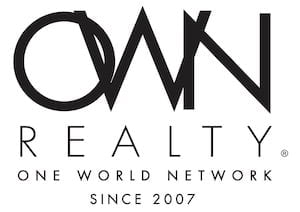1031 Exchange in Oklahoma
- Home
- 1031 Exchange in Oklahoma
Considering A Tax Deferred 1031 Exchange in Oklahoma? We are here to help!
A 1031 exchange in Oklahoma, also known as a tax-deferred exchange, offers an efficient and cost-effective strategy for investors looking to optimize their real estate investments. This process involves selling a qualified property and subsequently acquiring another qualified property within a specific timeframe. What sets a “1031 exchange” apart from a traditional sale is the treatment of the entire transaction as an exchange, not a standard sale.
This crucial distinction allows taxpayers to qualify for deferred gain treatment, meaning that they can defer capital gains taxes. Unlike conventional sales, where IRS taxation is applicable, 1031 exchanges offer investors a powerful tax-saving advantage, in accordance with US CODE: Title 26, §1031, governing the exchange of property held for productive use or investment.
For investors in Oklahoma, a 1031 exchange represents an opportunity to preserve capital, grow their real estate portfolios, and align their investments with long-term financial objectives in this dynamic real estate market.

Since property exchanges are a recognized method by the IRS for deferring capital gain taxes, it is crucial that you grasp the elements involved and the underlying purpose of such a tax-deferred transaction. The essential tax code for a successful exchange can be found in Section 1031 of the Internal Revenue Code.
We want to emphasize that the interpretation of the IRS and the widely accepted standards, regulations, and compliance rules for executing a qualifying transaction are outlined in the Like-Kind Exchange Regulations issued by the US Department of the Treasury.
This website will outline the IRS rules, guidelines, and requirements for a 1031 exchange. It’s important to recognize that these Regulations do not solely represent the law but also reflect the IRS’s interpretation of Section 1031.
Why Consider a 1031 Exchange in Oklahoma?
For real estate owners and investors, the 1031 exchange offers an IRS-recognized strategy to postpone capital gains taxes, making it essential to comprehend the intricacies and underlying purpose of this tax-deferred transaction. The specific tax code necessary for a successful exchange is outlined in Section 1031 of the Internal Revenue Code.
It’s worth noting that the interpretation of the IRS and widely accepted standards, regulations, and compliance guidelines can be found in the Like-Kind Exchange Regulations issued by the US Department of the Treasury. This website will elucidate these IRS rules, guidelines, and 1031 exchange requirements. It’s crucial to recognize that the Regulations don’t merely represent the law; they reflect the IRS’s interpretation of Section 1031.

The Significance of a 1031 Exchange:
Any property owner or real estate investor should consider a 1031 exchange in Oklahoma when anticipating the acquisition of a replacement “like-kind” property following the sale of an existing investment property. Failing to do so would result in the payment of a capital gains tax, which is currently 15% but could rise to 20% in the future. Additionally, it’s important to factor in federal and state tax rates in your specific state when executing a 1031 exchange.
The primary rationale for pursuing a 1031 exchange is the IRS’s depreciation of capital real estate investments at a rate of 3% per year for as long as you hold the investment, until it is fully depreciated.
1031 Exchange in Oklahoma
When you sell the capital asset, the IRS aims to tax you on the depreciated portion as income tax, which would be at the marginal tax rate. For example, if you’ve held an investment for 15 years, the IRS has depreciated it by 45%, and it wants you to pay taxes on that 45% depreciation. If the combined state and federal taxes amount to 35% at the marginal rate, this equates to approximately 15% of the property’s cost (one-third of the 45%).
If your property is fully depreciated, the entire 35% marginal tax rate applies. Another way to simplify this is that when you purchase a replacement property (without the benefit of a 1031 exchange), your purchasing power is reduced to the extent that it only represents 70-80% of its previous value (prior to the exchange and tax payment).
When it comes to real estate investments, leveraging a 1031 exchange in Oklahoma can be a game-changer for savvy investors. A 1031 exchange in Oklahoma is a strategic tax-deferral method that allows investors to sell an existing property and reinvest the proceeds into a like-kind property within the state, all while postponing the capital gains tax liability.
This powerful tax-saving strategy presents significant advantages for investors in the Sooner State. When contemplating a 1031 exchange in Oklahoma, it’s essential to comprehend the process thoroughly, ensuring compliance with IRS regulations while seizing the opportunity to maximize returns on your real estate investments.
Oklahoma’s diverse real estate landscape offers numerous possibilities for investors looking to benefit from a 1031 exchange. Whether you’re interested in residential, commercial, or industrial properties, the state provides an array of options for investors to explore.
By harnessing the potential of a 1031 exchange in Oklahoma, you can optimize your real estate portfolio, maintain and grow your investment capital, and align your property investments with your long-term financial objectives.
Whether you’re an experienced real estate investor or just starting your journey in property investments, Oklahoma’s real estate market and the 1031 exchange present a promising combination for those seeking to make informed investment decisions and achieve financial success.
Discover Your Path to Wealth Preservation
Power of 1031 Exchanges
Are you ready to embark on a financial journey that could reshape your real estate investments? Look no further! At Sapphire Investment Solutions, we specialize in turning the complex world of 1031 exchanges into a streamlined, wealth-building opportunity.


 Call us today:
Call us today: